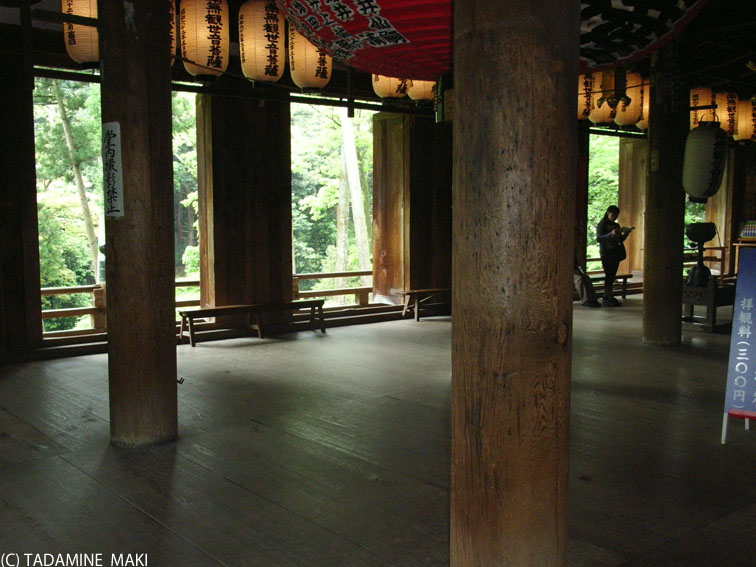Temple with Nature
Points of View
(1)Strangely shaped rocks in the precinct
(2)Elegant outline of the pagoda behind the rocks
(3)Forest seen from the veranda of the main hall
This temple is a little far from central Kyoto, and is not as famous as other temples for sightseeing. In general, though, the better temples tend to be located a little further from the center, which certainly applies in this case. The chief characteristic of the temple lies in the positioning of its buildings within nature and the way that nature is taken into the site of the temple. Now, let’s look at the tower and the main hall that together form the main structures of the complex.
Passing through the gate, you walk straight along a paved area. In autumn, the leaves on both sides of this path blaze vividly with reds and yellows. To the right of the path is a set of stairs leading to the main structures, which are located on a small hill.
After climbing the stairs, you see a series of large, rigid rocks directly ahead. These rocks were formed entirely by heat from inside the earth, and are carved with many wavy lines, the tracks of the earth’s gigantic forces. The temple’s name, Ishiyama-dera, comes from these magnificent rocks. The word ishi means rock or stone, yama means hill or mountain, and dera means temple. The rocks stand out magnificently in the center of the site as if they themselves had power and were worshiped.
Behind the rocks stands a pagoda, which is of a different style to the other five-story pagodas in this brochure. This is a two-story tower, and its upper body is very slim in contrast with the stouter lower level. Compared to the slimness of the upper body, the cypress-shingled roof of the lower part appears big yet sharp. This is one of Japan’s most beautiful pagodas featuring roofs shingled with cypress bark, and is stable and elegant.
The main hall is located on the hillside. At the gateway to it, visitors enjoy an impressive view ahead combining the columns and curved beams with the towering trees. Entering the building and looking outside through the wide doorway, you see the mountains between the trees. The numerous columns inside the hall complement the trees outside, so an open atmosphere pervades the inside of the building even though it is a little dark. As the hall is built on a hillside, one can feel closer to the forest and enjoy the great view.
With the metamorphic rocks at the center of the precinct, the combination of the bold rocks and the mild tower, and the main hall surrounded by the forest, this temple is made for enjoying nature.
